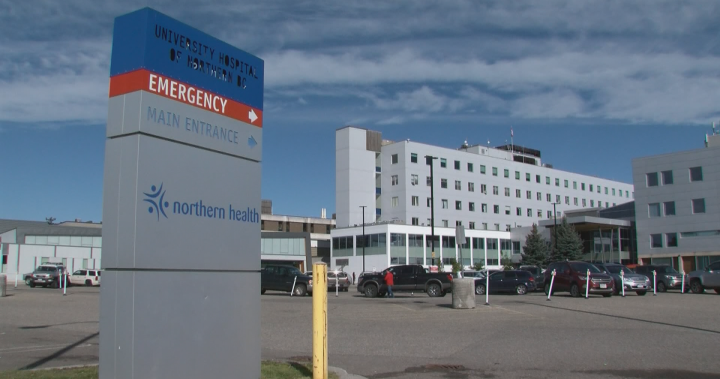The small waiting room of Powell River General Hospital smells of antiseptic and old coffee. Marianne Kettle, 36 weeks pregnant with her first child, glances nervously at the clock as she waits for her prenatal appointment. She’s driven nearly two hours from her home in Lund, a remote coastal community where midwifery and obstetrical care are non-existent.
“I grew up here, my family’s here,” she explains, her hand resting protectively on her rounded belly. “But I’ve been told I might need to relocate to Nanaimo or Vancouver for the last month of my pregnancy. We can’t afford that.”
Marianne’s situation is becoming increasingly common across British Columbia as rural and even suburban hospitals face critical shortages in maternity care providers. Last week, health authorities issued warnings about potential service reductions at five facilities across the province, including temporary closures of labor and delivery units.
At Victoria General Hospital, expectant mothers were advised that their care might be diverted to other facilities due to staffing shortages. The hospital, which typically handles about 3,000 births annually, has been operating with roughly 70 percent of its required obstetrical staff since February.
“We’re seeing an unprecedented convergence of challenges,” says Dr. Kathleen Ross, president of Doctors of BC. “Retirement of senior obstetricians, difficulty recruiting to rural areas, and the lingering effects of pandemic burnout are creating a perfect storm.”
According to data from the Society of Obstetricians and Gynaecologists of Canada, British Columbia needs approximately 27 more obstetricians just to meet current demand. The situation is particularly dire in communities north of Kamloops, where some pregnant women now face drives of three to five hours to reach facilities equipped for delivery.
When I visited the maternity ward at Mills Memorial Hospital in Terrace last month, the unit had been operating with emergency staffing protocols for 18 consecutive days. A handwritten sign directed expectant mothers to call ahead before arriving, as services might be unavailable. The nearby coffee shop had become an informal gathering place for pregnant women sharing information about which facilities were accepting patients.
The ripple effects extend beyond just access to delivery services. Prenatal care is becoming increasingly fragmented as family physicians—who have traditionally provided much of this care in British Columbia—face overwhelming patient loads and administrative burdens.
“I’ve been on call for 27 consecutive days,” Dr. Lisa Vogt told me as we sat in her cramped office in Quesnel. Stacks of patient files covered every surface. “There are four of us covering what used to be handled by ten physicians. Something has to give.”
Health Minister Adrian Dix acknowledges the severity of the situation. In a statement released yesterday, he outlined a three-year plan to address maternity care shortages, including increased funding for rural recruitment, expansion of midwifery education programs, and integrating more nurse practitioners into maternal care teams.
“Every expectant parent deserves high-quality care close to home,” Dix stated. “We’re taking immediate steps to stabilize existing services while building long-term capacity.”
The provincial government has allocated $12.4 million for recruitment and retention initiatives specifically targeting maternity care providers. However, many front-line workers question whether these measures will come quickly enough to prevent further service reductions.
For Indigenous communities, the crisis compounds existing inequities in maternal health outcomes. Statistics Canada data shows that Indigenous women already travel significantly farther for maternal care than non-Indigenous women, with some communities in northern BC facing regular evacuations of pregnant women weeks before their due dates.
“Our grandmothers gave birth on these lands for thousands of years,” says Marjorie Williams, a Gitxsan doula who works with families across the Highway 16 corridor. “Now our women are told they must leave their communities, their support systems, sometimes for a month or more, to access what should be basic healthcare.”
Williams has been advocating for culturally safe maternity care that combines traditional knowledge with modern medicine, but notes that the current shortage makes implementing such programs nearly impossible.
The human cost of these shortages extends beyond inconvenience. A study published in the Canadian Medical Association Journal last year found that women who traveled more than two hours to give birth faced a 20 percent higher risk of complications and interventions compared to those delivering closer to home.
For Jen Beaupré, a 34-year-old teacher from Prince George, these statistics became reality when she unexpectedly went into labor at 34 weeks while visiting family in Fraser Lake.
“The local clinic couldn’t handle a preterm birth, so they called an ambulance,” she recalls. “But it was snowing, and I ended up delivering on the highway with a paramedic who hadn’t delivered a baby since training. My son was fine, thank God, but I still have nightmares.”
Some communities are developing innovative approaches to address the crisis. In the Kootenays, a collaborative model bringing together midwives, family physicians, and the region’s only obstetrician has managed to maintain consistent services despite provincial shortages. The model includes shared on-call responsibilities and integrated electronic health records that allow seamless transitions between providers.
“It’s working because we’ve dismantled the traditional hierarchies,” explains midwife Elena Johnson. “Everyone brings their expertise, and we support each other’s wellbeing so burnout doesn’t decimate our team.”
Professional organizations are calling for similar collaborative approaches province-wide, along with increased training positions for maternity care providers. The University of British Columbia has responded by expanding its midwifery program by 20 percent and creating new residency positions for obstetrics and gynecology, but graduates won’t enter the workforce for several years.
Back in Powell River, Marianne Kettle’s appointment has finally arrived. Her physician, Dr. Karen Lucas, looks exhausted but manages a warm smile. This small hospital’s maternity unit has survived thus far, but Lucas admits they’re “hanging by a thread” with coverage.
“We’re doing everything possible to maintain services,” she tells me later. “But the reality is, we need more hands. These aren’t just statistics—these are mothers and babies whose lives depend on having skilled care available when they need it.”
As British Columbia grapples with these challenges, one thing remains clear: sustainable solutions will require more than stopgap measures. The coming months will reveal whether the province’s maternal care system can weather this storm without leaving its most vulnerable residents behind.






